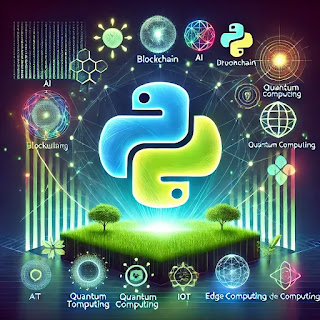Top Python Programming Language Trends in 2025
Python continues to dominate the programming world in 2025 with its versatility and strong community support. Here are the key trends shaping Python's landscape this year:
1. Generative AI and Python’s Role
Generative AI tools have gained widespread adoption across industries, and Python remains the top choice for developing these technologies. Libraries like TensorFlow, PyTorch, and Hugging Face’s Transformers make Python indispensable for AI developers. With continual improvements in AI model efficiency, Python-based AI frameworks are becoming faster and more accessible.
2. Edge Computing with Python
As IoT and edge computing grow, Python is emerging as a key player. Its lightweight frameworks, such as MicroPython and CircuitPython, are optimized for resource-constrained devices, enabling Python to power edge-based applications in real-time decision-making and automation.
3. Python in Web3 Development
The rise of decentralized technologies and Web3 is creating new opportunities for Python. Developers are using Python libraries like Web3.py to interact with blockchain networks, build decentralized apps (dApps), and integrate smart contract functionality into their systems.
4. Green Tech and Python
Sustainability initiatives are driving innovation in tech. Python is aiding green technologies through data analytics, machine learning models for energy efficiency, and IoT systems that monitor and optimize resource usage. Tools like Pandas, Matplotlib, and Scikit-learn are empowering developers to analyze and visualize climate data.
5. Custom AI Assistants
The demand for customized AI assistants in various industries, including healthcare, finance, and retail, has surged. Python is a go-to language for developing AI assistants due to its NLP libraries, such as SpaCy and NLTK, and speech-processing tools like SpeechRecognition.
6. Low-Code and No-Code Python Tools
The trend toward democratizing programming continues, with Python-based low-code and no-code platforms gaining traction. Frameworks like Anvil and PyCaret make it easier for non-developers to build applications and perform machine learning tasks without extensive coding knowledge.
7. Quantum Computing and Python’s Expanding Role
Python is leading the way in quantum computing research and application. Libraries like Qiskit and Cirq are helping developers write algorithms for quantum systems, making it a key language in this emerging domain.8. Enhanced Performance with PyScript
PyScript is bridging the gap between Python and the web, allowing developers to run Python code directly in browsers. This trend is revolutionizing how Python is used in web development and expanding its reach beyond server-side programming.
9. Data-Centric Python Development
Python’s dominance in data science is growing stronger with tools like Polars and DuckDB offering faster data processing capabilities. These advancements are allowing data teams to handle larger datasets more efficiently.
10. Python’s Community-Driven Growth
Finally, the Python community continues to be its backbone. With frequent updates, open-source contributions, and resources like PyCon
events, Python remains a dynamic and evolving ecosystem that meets the needs of its diverse user base.




Comments
Post a Comment